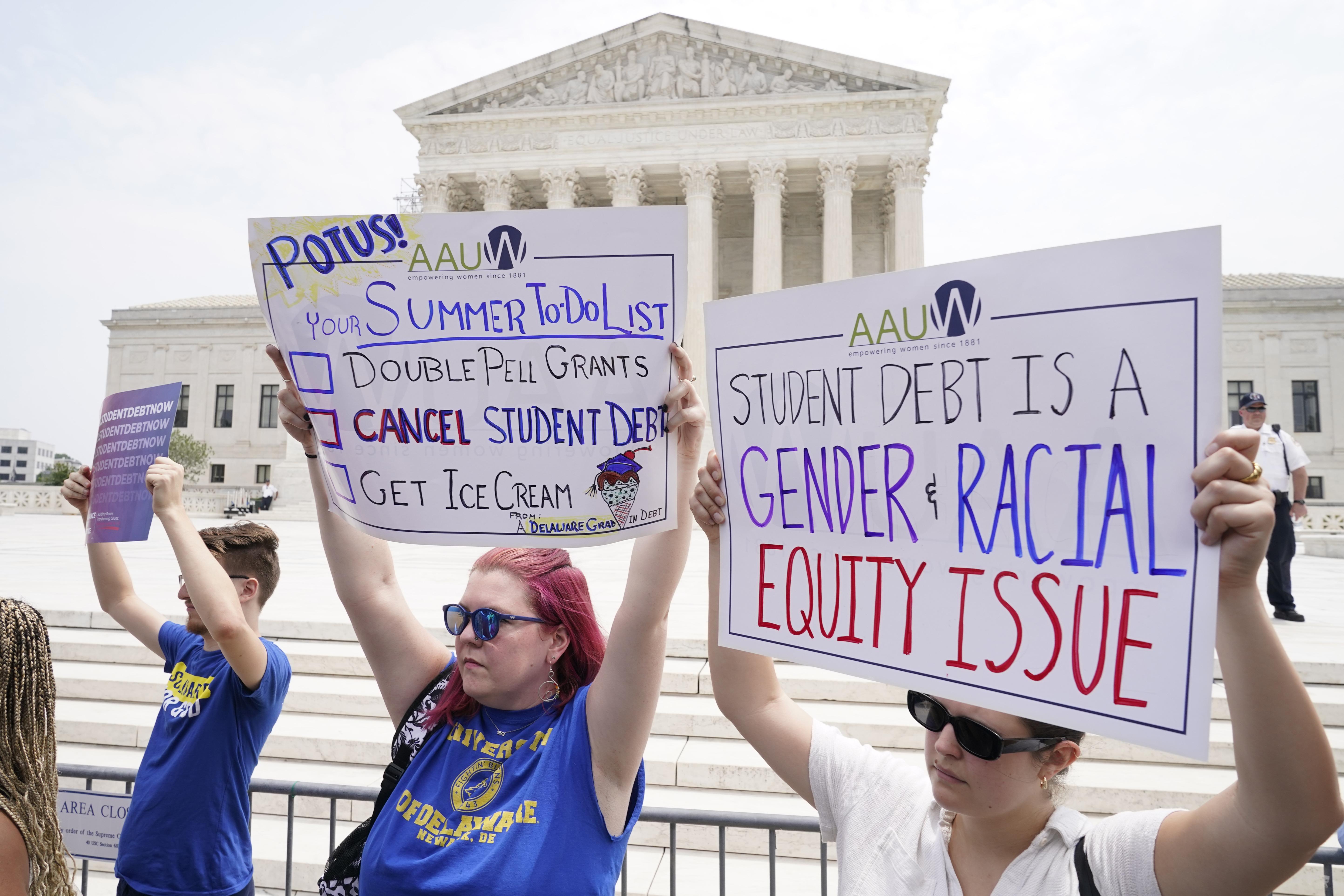 People demonstrate outside the Supreme Court, June 30, 2023, in Washington. (PHOTO / AP)
People demonstrate outside the Supreme Court, June 30, 2023, in Washington. (PHOTO / AP)
After the US Supreme Court struck down President Joe Biden's student loan forgiveness plan in June, the administration has come up with a workaround. However, the new plan could also face legal opposition.
On Sunday, the US Department of Education launched a beta website to accept student loan payment applications under the Biden administration's new Saving on a Valuable Education, or SAVE, Plan.
When the SAVE plan is fully phased in, some borrowers could see their monthly bills halved and remaining debt canceled after making at least 10 years of payments. The plan will cost about $475 billion over 10 years, the Wharton School at the University of Pennsylvania estimated
"Part of the president's overall commitment is to improve the student loan system and reduce the burden of student loan debt on American families," an official from the Biden administration said, CNN reported. "The SAVE plan is a big part of that."
One of the main features of the new plan is that the income protected from student loan payments will rise from 150 percent above the federal poverty guidelines to 225 percent.
ALSO READ: US appeals court rejects Biden's bid to revive student debt plan
A single person earning less than $32,805 a year would have monthly payments of $0, as would families of four with household income under $67,500. The administration also said the new plan, scheduled to go into effect in July next year, will save a single borrower $1,080 a year and families of four $2,244 a year.
When the SAVE plan is fully phased in, some borrowers could see their monthly bills halved and remaining debt canceled after making at least 10 years of payments.
The plan will cost about $475 billion over 10 years, the Wharton School at the University of Pennsylvania estimated.
ALSO READ: US judge strikes down Biden's student debt relief plan
On June 30, the Supreme Court ruled in Biden vs Nebraska that the US secretary of education did not have the authority to "waive or modify" student loans under the Higher Education Relief Opportunities for Students Act. Five other Republican-led states — Missouri, Arkansas, Iowa, Kansas and South Carolina — were co-filers in the suit.
Chief Justice John Roberts wrote in his majority opinion that the "modifications" by the Department of Education "created a novel and fundamentally different loan forgiveness program" that "expanded forgiveness to nearly every borrower in the country".
On June 30, the Supreme Court ruled in Biden vs Nebraska that the US secretary of education did not have the authority to "waive or modify" student loans under the Higher Education Relief Opportunities for Students Act
"These Republican officials just couldn't bear the thought of providing relief to working-class, middle-class Americans," Biden said after the court ruling. "Republican state officials sued my administration attempting to block relief, including millions of their own constituents."
Nebraska Attorney General Mike Hilgers, whose office argued the case in the Supreme Court, said suing over Biden's new plan was a possibility, US political website The Hill reported.
READ MORE: Texas sued by Biden admin over barriers used to block migrants
Abby Shafroth, director of the National Consumer Law Center's Student Loan Borrower Assistance Project, told The Hill: "I do think that any plan that comes out of this process will be on really solid legal ground. That said, the issue has clearly become highly politicized, and we saw a number of ideological-driven challenges last plan, and so we could see those again."


